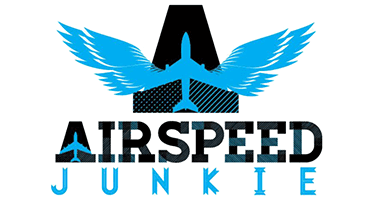Mention a bird strike issue today and most people will either get very afraid or they wont care at all. In the past bird strikes have been a major factor in aircraft accidents and incidents throughout history. A single small bird can take out the largest of airplanes either causing them substantial damage or total aircraft destruction. It has been well documented over the years and airports and the FAA have spent billions of dollars to try and control strikes to commercial aviation. Take this very incident that just happened two days ago. If you look closely at this jet engine you may notice that it took a single small bird strike through the inlet of the engine.
Obviously the bird was killed instantly and it parts were impaled on different parts of the intake of the engine. Shown here is the remains that are mostly stuck to the stator vanes of the engine. The bird actually went all the way through the engine and excited out the back. The tell tale sign are some small blood spatters on the back of the engine nacelle and lower part of the wing where the engine is mounted. The odds of actually seeing the bird come through the engine are pretty small, however there is one tell tale sign that you had a bird strike, the smell. For some reason the smell of a bird strike is awful. Its not like cooked chicken which essentially is what happens, but rather a very unpleasant odor that fills the cabin. This is due to the engine bleeds that take part of the engine air and send it to the air conditioning packs which process it for the cabin. When that smell is in the bleed line, it takes a good hour or so to get it all out.
Repairs
For this particular event the aircraft was briefly taken out of service and thoroughly cleaned. Because this is such a common occurrence, the FAA has some pretty good guidelines on the procedures for each aircraft and what to look for. Believe it or not, aircraft can be returned to service immediately with a few stipulations to inspection. Most require some sort of boar scope inspection usually within ten hours. That was the case for this example, the aircraft was returned to service in about 2 hours. The pilots were to carefully monitor the engine parameters for any changes and fly the aircraft normally. The only difference was that it was a little bit on the stinky side for about a half hour or so.
So what is the big difference with drone strikes?
Here is where we enter into a whole new realm of issues that are sure to cause major complications. Remember the geese that USAirway’s ingested that caused them to land in the Hudson river? Well those geese typically weigh between 7 to 12 pounds. That is a much bigger problem than a small tweety bird that you often see around your house. Now imagine a commercial drone weighing in at double to triple that weight hitting a commercial airliner while flying. Birds are somewhat soft and pliable made of flesh and bone. Drones are not soft and the odds of them doing serious engine damage is much larger. Taking a drone into an engine is almost certain to cause catastrophic damage and complete failure.
Right now the FAA is trying to develop rules that will allow 55lb drones to share airspace. The potential for loss of life and aircraft hulls will increase exponentially. Part of the reason is that the FAA works in ultra slow motion, government wheels spin very slowly. The other part of the issue is the actual pilots of the drones themselves. Who is going to fly them? Are they professionally trained individuals? Do they know the rules of engagement of airways and congested airport activity. More important, will this be regulated? If so, the price of operating a drone will increase beyond business feasibility. Amazon is one of the proposed advocates of using drone service for delivery. Knowing Amazon as the dominate player in the marketplace, they are going to pass those costs on to their customers or their vendors. (of course) But that will not address the damage that will occur when the first collision occurs, and it will happen. I can only imagine that it will cause a field day for insurance companies to cover drone companies for liability or loss of life. If airlines are forced to pay for these increases in insurance, they will definitely pass that on to passengers. Gone are the days of the $99 ticket.
Even in the private sector it is only a matter of time before some individual is going to see how close he can get to a commercial airliner. All you have to do is to look at the use of small hand held lasers that are sold everywhere. People shine those at aircraft all the time without knowing the damages they can cause to pilot vision. It is well documented, but not really the point of this discussion. The point is, Joe consumer will screw up and the results will be devastating. It has already happened to two commercial airliners at JFK and as drones become more popular the odds will continue to rise.
Right now, hitting a small bird or even a goose is looking better and better considering the upcoming options from drone strikes. Hopefully the general public will be more aware of what the FAA is about to do and take it into consideration when buying their own drone.








